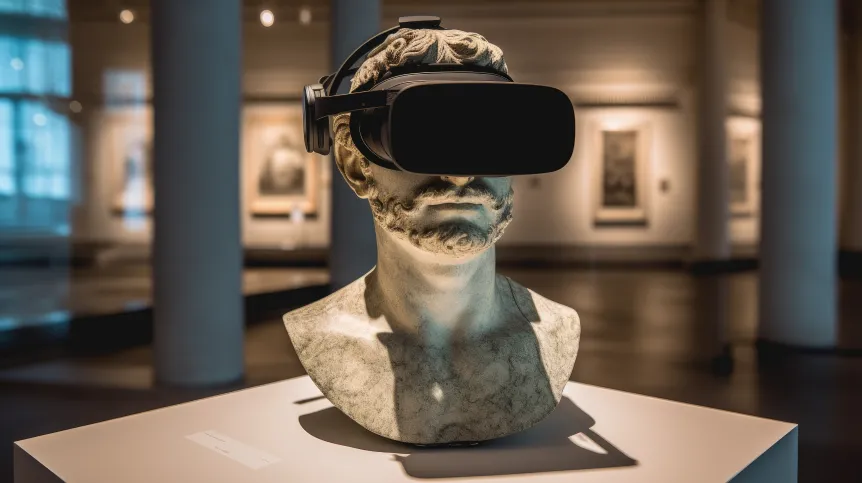
The digital revolution does not spare museums, which are starting to change from static to interactive. However, research by scientists from the University of Lodz and the Catholic University of Lublin shows that Polish museum employees are afraid of introducing new technologies, including social robots.
Scientists from the University of Lodz and the John Paul II Catholic University of Lublin Dr. Artur Modliński, Dr. Paweł Fortuna and Dr. Bohdan Rożnowski, conducted a survey on a group of 220 museum employees from all over Poland. The results were published in Museum Management and Curatorship - a journal devoted to management in culture.
According to Dr. Artur Modliński, museum managers realise that contemporary culture recipients are looking for interaction and involvement.
'For this reason, an increasing number of people are trying to rebuild the museum space in accordance with the concept of edutainment, i.e. learning through play (a combination of the words education and entertainment - ed.). We no longer just look at exhibits, but we can smell them, touch something, listen, perhaps even +talk+ to a hologram. New technologies are intended to encourage visitors to visit museums, but also help visitors learn faster and remember content better by engaging various senses,’ says Modliński, head of the Artificial Intelligence and Cybercommunication Research Centre at Lodz University’s Faculty of Management.
New solutions that appear in large and respected museums include social robots, i.e. machines that can communicate with humans and, for example, act as information points or guides.
According to research by scientists from the University of Lodz and the Catholic University of Lublin, Polish museum employees are afraid of introducing social robots into their facilities and react negatively to this issue on three levels: cognitive, behavioural and emotional.
Modliński says: 'First of all, study participants have negative attitudes towards interactions with robots due to negative attitudes acquired earlier, among other things due to films usually showing robots as a threat to humanity. Secondly, museum employees suspect that they will not be able to work effectively with such technology due to lack of technical training, and that robots may replace them in the future.
'In addition, museum employees are afraid that the implementation of a robot will involve additional responsibilities. The digital revolution has already caused museum employees, passionate about creating exhibitions and social education, to spend a lot of time on duties related to, for example, running social media, which they not always like. A robot would be another additional burden, distracting them even more from creative work.’
Modliński adds that the age of museum employees does not affect their attitudes towards social robots. 'The average age of our respondents is 40. However, we have not shown any correlation between age and attitude towards robots - both younger and older people had similar concerns,' he says.
When asked about aspects of the results that surprised him, Modliński admits that he did not expect the scale of responsibilities related to the operation and implementation of new technologies that museum employees are overwhelmed with. 'In the world's largest museums, museum employees are either museologists in the strict sense or social media experts. In Poland, this distinction is rarely made, although of course we are aware that it mainly depends on the financial situation of each institution,’ he says.
The authors of the study suggest that if museum managers would like to introduce social robots into the museum space, they should take into account not only the financial capabilities or the potential to increase the attractiveness of the facility, but also the needs and attitudes of museum employees.
'Without the approval of museum staff, even technology welcomed by visitors will not remain in the organisational space for long. On the other hand, if Polish museums want to attract visitors and make a profit, they must start changing in this respect,’ says Modliński.
PAP - Science in Poland, Agnieszka Kliks-Pudlik
akp/ zan/ kap/
tr. RL













